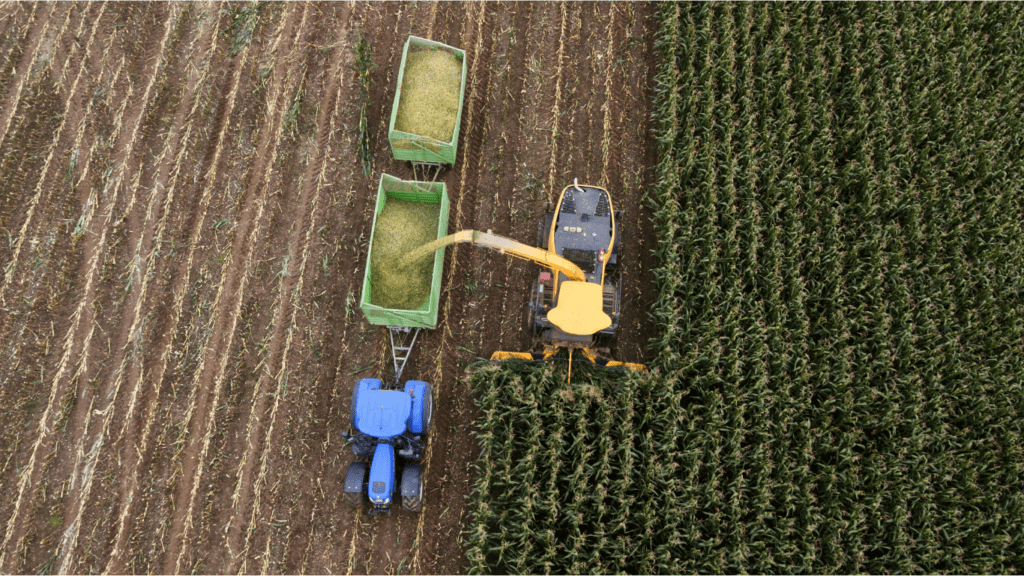Understanding Precision Agriculture
Precision agriculture leverages advanced technologies to optimize crop production. GPS and GIS (Geographic Information Systems) guide tractors to plant seeds with pinpoint accuracy.
Drones survey fields from the sky, identifying issues invisible from the ground. Sensors measure soil moisture, nutrient levels, and temperature, enabling farmers to tailor their approaches based on real-time data.
Crop management benefits significantly from data analytics. Yield monitors collect harvest data, providing valuable metrics for future planting decisions. Fertilizer application becomes more efficient through variable rate technology (VRT), which ensures crops receive the exact nutrients they need.
Environmental sustainability is another core component. By applying water and pesticides more precisely, farmers minimize waste and reduce runoff into nearby water sources. This targeted approach conserves resources and protects ecosystems.
Using precision agriculture tools results in reduced operational costs. Automated tractors save time and labor, which directly impacts financial efficiency. Drones and IoT devices offer continuous monitoring, allowing farmers to address problems before they escalate, leading to healthier crops and higher yields.
Precision agriculture’s integration into farming practices signals a pivotal shift in how we approach agriculture. Its blend of technology, data, and sustainability presents a holistic advancement, ensuring productivity and environmental care go hand in hand.
Key Technologies Driving Precision Agriculture
Accelerating precision agriculture, several advanced technologies play critical roles in transforming the farming landscape.
GPS Technology
GPS technology provides accurate geolocation data essential for precision farming. Farmers use GPS-based guidance systems to steer tractors and other machinery, ensuring precise planting, fertilization, and crop monitoring.
This minimizes overlaps and gaps, improving field efficiency. GPS also aids in mapping field variations to implement site-specific management practices.
Drones and Aerial Imaging
Drones offer an aerial perspective indispensable in modern farming. Equipped with cameras and sensors, they capture high-resolution images and gather real-time data on crop health, pest infestation, and irrigation needs.
These insights help farmers make informed decisions, optimizing yield and reducing input costs. Drones can also survey large fields quickly, covering more ground than traditional methods.
Soil and Crop Sensors
Soil and crop sensors detect critical metrics like moisture levels, nutrient content, and temperature. Positioned throughout fields, these sensors provide continuous data, allowing farmers to fine-tune irrigation and fertilization schedules. By monitoring soil health and crop conditions, these sensors help maintain optimal growing environments, increasing productivity and sustainability.
Data Management Systems
Data management systems integrate and analyze vast amounts of information collected from various sources like:
- sensors
- drones
- GPS
These systems help farmers interpret data to make strategic decisions on resource allocation, pest control, and planting schedules. Advanced platforms offer predictive analytics, enabling proactive measures to address potential issues before they impact crop yields.
Benefits of Precision Agriculture

Precision agriculture is transforming the farming industry, offering numerous advantages that enhance various aspects of agricultural practices.
Increased Efficiency
Precision agriculture boosts efficiency by utilizing technology to monitor and manage resources accurately. GPS enables farmers to map fields, ensuring precise planting.
Sensors provide real-time data on soil and crop conditions. This data helps optimize irrigation and fertilization schedules. Drones deliver aerial imagery, identifying issues early.
Data analytics offer insights into crop health, leading to timely interventions. These tools collectively streamline operations, saving time and resources.
Cost Reduction
Cost reduction in precision agriculture results from targeted resource use. Variable rate technology (VRT) adjusts input application rates based on field variability.
Farmers apply fertilizers, pesticides, and water only where needed. This minimizes waste and reduces input costs. Early detection of issues through sensors and drones prevents crop losses, safeguarding investments. Data-driven decision-making improves yield predictions and market strategies. Overall, precision agriculture maximizes resource efficiency and minimizes expenditures.
Environmental Sustainability
- Environmental sustainability is a critical benefit of precision agriculture.
- Applying inputs like water, fertilizers, and pesticides in precise amounts, farmers minimize environmental impact.
- Efficient water use through smart irrigation systems conserves water resources.
- Reduced chemical use decreases soil and water contamination.
- Precision agriculture promotes crop rotation and cover cropping, enhancing soil health.
- Data analytics help manage carbon footprint by optimizing machinery use. This approach supports a balance between productivity and ecological stewardship.
Challenges and Limitations
While precision agriculture offers substantial benefits, the industry faces several challenges and limitations.
Technological Barriers
Many farmers struggle with limited access to the latest technologies. Advanced tools like drones and soil sensors require reliable internet connectivity, which can be sparse in rural areas.
Additionally, the complexity of integrating various systems like GPS and GIS can hinder adoption. Training and technical support are necessary; however, they often lack accessibility, slowing the implementation process.
High Initial Costs
The initial investment in precision agriculture technologies can be prohibitive. Equipment like drones and advanced sensors, along with software licenses for data analysis, demand significant capital.
Small-scale farmers encounter difficulty justifying these expenses against their limited budgets. Financial constraints prevent widespread uptake, making it easier for larger farms with more resources to benefit from these innovations.
Data Privacy Concerns
Collecting and analyzing vast amounts of agricultural data raises privacy issues. Farmers worry about who controls their data and how it’s used. There are concerns that companies providing these technologies might misuse data for their gain. Establishing transparent data governance policies is essential, yet complex, to ensure farmers’ trust and protect their sensitive information.
Future Trends in Precision Agriculture
Precision agriculture continues to evolve, incorporating advanced technologies to meet the growing demands of efficiency and sustainability in the farming industry.
AI and Machine Learning
AI and machine learning are revolutionizing decision-making processes in precision agriculture. These technologies analyze vast amounts of farm data, identifying patterns and predicting outcomes to optimize planting schedules, pest management, and irrigation.
For example, AI algorithms can forecast crop yields based on weather, soil conditions, and historical data, improving planning and resource allocation.
Advanced Robotics
Advanced robotics enhance precision agriculture by automating labor-intensive tasks, reducing human error, and increasing operational efficiency.
Robots equipped with computer vision and AI can carry out tasks like planting, harvesting, and soil analysis with high precision.
For instance, autonomous tractors and drones can precisely plant seeds, apply fertilizers, and monitor crop health, significantly reducing labor costs and increasing yield accuracy.
Blockchain Technology
Blockchain technology addresses data privacy concerns in precision agriculture, offering secure and transparent data management solutions.
Blockchain enables trustworthy data sharing among stakeholders, ensuring that all transactions and changes are recorded immutably. In agriculture, blockchain can track the origin and journey of produce from farm to table, enhancing supply chain transparency and food safety. Farmers can also leverage blockchain to manage smart contracts for transactions, ensuring timely and fair payments.



